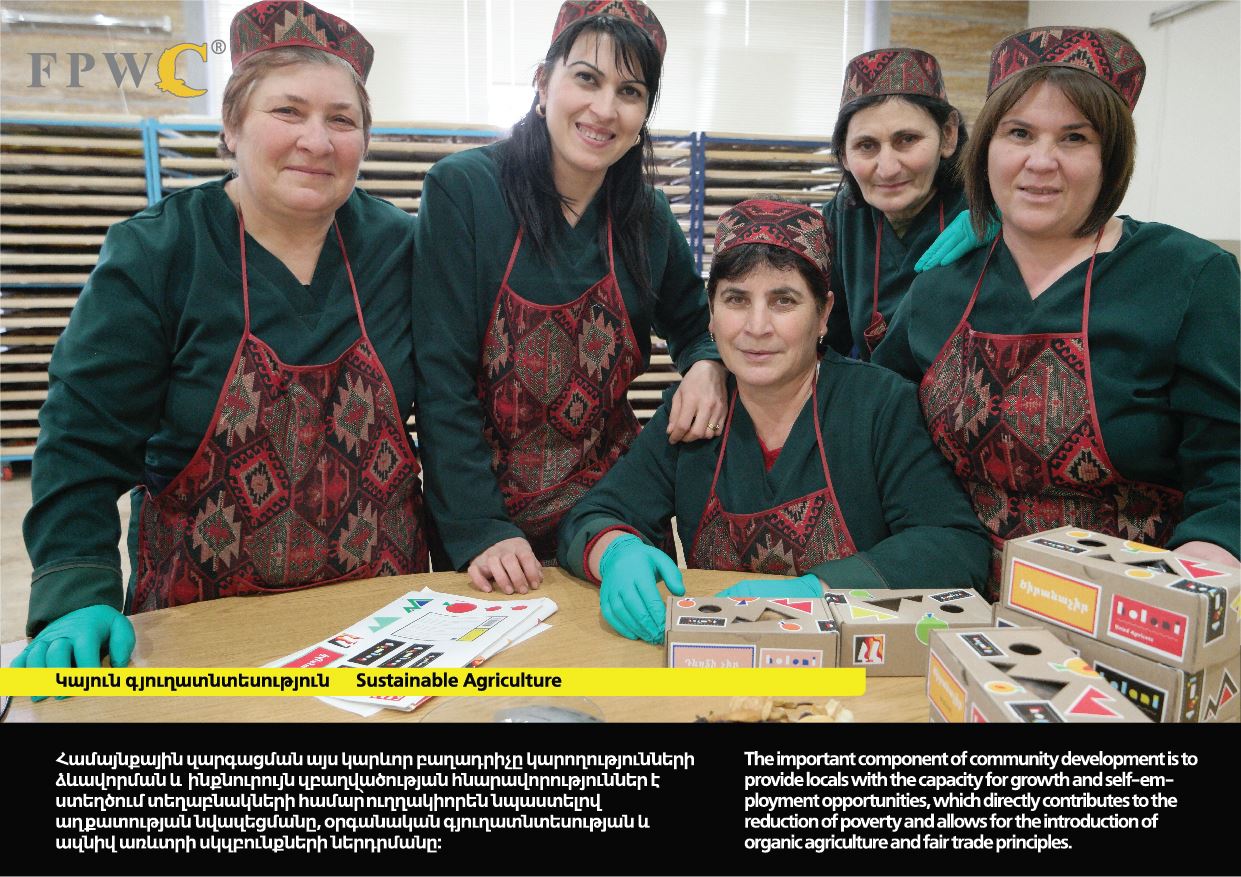

Through the Soviet period and after independence, Armenian society in general and rural communities in particular have continuously been discouraged from taking active role in the protection and management of nature reserves.
Recognizing the urgent need for communities living around protected areas to actively participate in and benefit from the conservation of the resources upon which they depend, the FPWC, since 2006, has consistently contributed to the communities’ environmental, social, economic, and cultural development, thus referring to all four dimensions of sustainability.
The community development project promotes a new sustainable development strategy for the villages all around Armenia, with a focus on the areas adjacent to the CWR.
It aims to improve the livelihoods of rural people and to foster sustainable rural development as a holistic approach. This strategy links economic and infrastructure improvements with nature conservation and the protection of the environment by offering inhabitants of remote villages incentives and opportunities to gain income by using/managing natural resources sustainably.
Winning trust of the communities by proven positive impact happening within them is a key enabling factor. Parallel to conservation work, FPWC has been introducing renewable energy solutions to dozens of communities; constructing / renovating infrastructures for drinking / irrigation water, building capacity and creating employment and income opportunities for the communities. These and more hugely contributed to building trust toward FPWC's work in conservation; willingness to learn, understand and contribute; compassion and solidarity.
Mistrust and resistance developed on the background of factors such as role of the government as only owner of the nature reserves, centralized administration, lack of consideration for local and societal input for conservation planning and management, as well as corruption, lack of attention to the environmental sector by legislators were major challenges FPWC faced while approaching the communities with an offer of partnership and participation.
As the CWR grows, engaging communities still takes time and consistency, but it is only complicated to the point until the "first ice melts". Then it becomes contagious, turning into a growing wave making its own way.
Starting working in only a few communities more than 10 years ago, communicating patiently the benefits of conservation to them, using different localized methodologies, tackling with distrust and resistence, FPWC is now at a place where more and more communities turn for collaboration on their own initiative, bringing forward their commitment to common ideas and willingness to invest for their implementation.